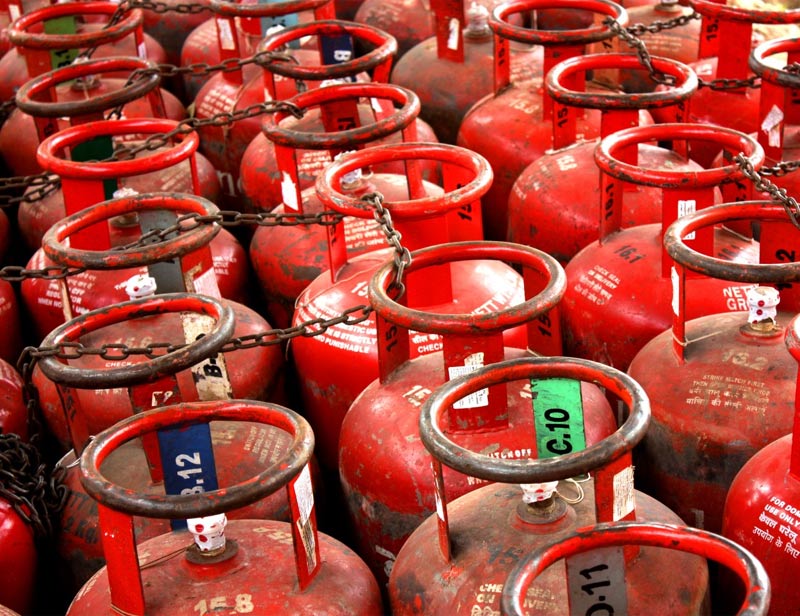Liquefied petroleum gas (LPG)
Liquefied petroleum gas (LPG) is a mixture of gaseous hydrocarbons which has a wide variety of applications. It is produced as an associated gas from natural gas streams and oil extraction as well as from oil refining, and can either be captured or destroyed through flaring or venting.
LPG can be a convenient and clean alternative to natural gas, electric heating or kerosene. It is often used to provide energy to areas without direct access to piped natural gas, to provide off-the-grid refrigeration, and as a power source for combined heat and power (CHP) technologies.
First produced in 1910, LPG now supplies approximately 3% of total energy demand. It is clean in that it burns with no soot and few sulphur emissions, and while it can contribute to air pollution, it does not pose ground or water pollution hazards.
Propane and butane are the two forms in which LPG exists, with their property differences making them suited to particular uses. Propane has a lower boiling point and is better suited to outdoor storage, central heating and other commercial applications. Butane is better suited to indoor applications, such as for powering portable heaters.
The boiling point of LPG is below room temperature, meaning that at normal temperatures and pressures it will evaporate quickly. Therefore, LPG is often stored and supplied in pressurised steel containers such as tanks, cylinders and disposable canisters. These are usually filled to 80-85% capacity to allow for thermal expansion of the LPG in liquefied form.
LPG is widely used in construction, such as for bitumen boilers, heating site accommodation, drying out structural elements, curing concrete, and so on. On construction sites, LPG is usually found in cylinders rather than bulk storage vessels, which are often used when LPG is supplying central heating and/or larger commercial applications.
LPG can burn or explode when in combination with oxygen if there is an ignition source. Containers of LPG may explode if exposed to fire. Other hazards include causing cold burns to skin when in liquid form, as well as non-toxic leakage of LPG displacing oxygen and potentially causing asphyxiation.
Under the Health and Safety at Work, etc. Act 1974, and subsequent legislation, site managers have a responsibility to protect against risks where LPG is being used. Appropriate risk assessments should be carried out under the Control of Substances Hazardous to Health Regulations 2002, particularly when LPG cylinders will be moved using manual handling.
In terms of construction site storage of LPG cylinders, they should:
- Be bept away from combustible material.
- Be kept away from potential ignition sources.
- Be kept away from occupied buildings.
- Not exposed to excessive heat.
- Be stored at least 3 m from cylinders containing oxygen, chlorine, ammonia, etc.
- Be kept in a vertical position.
- Be stored with appropriate fire extinguishers.
- Have prominent displays indicating high flammability, no smoking or naked flames, and so on.
- Be stored securely.
Appropriate evacuation and other safety procedures should be in place in case of fire or leaks. Site staff should be given appropriate information and training regarding LPG.
When being used for the heating of site facilities, the cylinders should be located outside the building, with fixed pipework taking the gas supply inside. Heaters should also have proper, and regularly checked, ventilation. Gas Safe-registered installers should be used to install fixed appliances.
[edit] Related articles on Designing Buildings Wiki
Featured articles and news
The UK's Modern Industrial Strategy: A 10 year plan
Previous consultation criticism, current key elements and general support with some persisting reservations.
Building Safety Regulator reforms
New roles, new staff and a new fast track service pave the way for a single construction regulator.
Architectural Technologist CPDs and Communications
CIAT CPD… and how you can do it!
Cooling centres and cool spaces
Managing extreme heat in cities by directing the public to places for heat stress relief and water sources.
Winter gardens: A brief history and warm variations
Extending the season with glass in different forms and terms.
Restoring Great Yarmouth's Winter Gardens
Transforming one of the least sustainable constructions imaginable.
Construction Skills Mission Board launch sector drive
Newly formed government and industry collaboration set strategy for recruiting an additional 100,000 construction workers a year.
New Architects Code comes into effect in September 2025
ARB Architects Code of Conduct and Practice available with ongoing consultation regarding guidance.
Welsh Skills Body (Medr) launches ambitious plan
The new skills body brings together funding and regulation of tertiary education and research for the devolved nation.
Paul Gandy FCIOB announced as next CIOB President
Former Tilbury Douglas CEO takes helm.
UK Infrastructure: A 10 Year Strategy. In brief with reactions
With the National Infrastructure and Service Transformation Authority (NISTA).
Ebenezer Howard: inventor of the garden city. Book review.
The Grenfell Tower fire, eight years on
A time to pause and reflect as Dubai tower block fire reported just before anniversary.
Airtightness Topic Guide BSRIA TG 27/2025
Explaining the basics of airtightness, what it is, why it's important, when it's required and how it's carried out.
Construction contract awards hit lowest point of 2025
Plummeting for second consecutive month, intensifying concerns for housing and infrastructure goals.
Understanding Mental Health in the Built Environment 2025
Examining the state of mental health in construction, shedding light on levels of stress, anxiety and depression.
The benefits of engaging with insulation manufacturers
When considering ground floor constructions.
Lighting Industry endorses Blueprint for Electrification
The Lighting Industry Association fully supports the ECA Blueprint as a timely, urgent call to action.
























